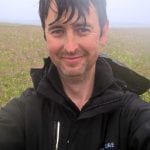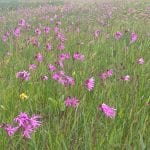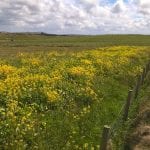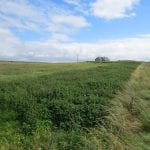Feargal Ó Cuinneagáin
Feargal Ó Cuinneagáin is a young farmer working on 10 hectares on the Mullet Peninsula. NPWS and Feargal entered an agreement under the NPWS Farm Plan Scheme in March of 2016. The primary objective was to return Corncrakes to the farm, while also boosting wider biodiversity including Twite (another ‘red-list’ bird), Chough, Barnacle Geese, pollinators, and habitats in their own right like a species-rich fen. NPWS and Michael Martyn Agri-Environment Consultants worked closely with Feargal in designing and implementing a series of measures to convert what was a rather lifeless monoculture of grass to a tapestry full of colour, sights and sounds as would have been commonplace throughout the Irish countryside in previous generations. This plan however is not a step back in time, rather it is seen as a way forward. For example pollinators are vital in our food production systems and to the survival of flowering plants. Furthermore, in most of the High Nature Value farmland across Ireland, the income derived from agri-environmental schemes, is a lifeline in keeping farmers farming. By working with Feargal on his land, we have not only created a haven for important habitats and species, but we have also trialled new and innovative measures in managing for wildlife on productive agricultural land.
It has been a pleasure working with Feargal on this and to see the hard work of Feargal and his father Seosamh pay off. The link between the generations, to when Seosamh remembers Corncrake calling, and his son Feargal creating an environment for them to return is quite special.
Feargal’s farm is now a jewel in the crown of the spectacular Mullet Peninsula on the far west coast of Ireland.
Since Feargal began farming for nature here, there has been a remarkable increase in the rare and threatened wildlife on his farm. Twite arrived in 2017, with at least 26 twite feeding on a plot designed for the bird, plus this has linked into national studies, whereby they were ringed and hopefully this will provide information on their dispersal. There were no Corncrake present originally, and in the summer of 2018 there were six calling males. This is an extraordinary number, unmatched anywhere else in Ireland. In the winter, barnacle geese graze on the farm. The air is filled with the sound of skylarks in the summer. A family of chough have started to nest in a neighbouring derelict building, after he installed a nest box. He has also managed the hay meadow, specifically by focussing on red clover, as well as planting phacelia and kale, resulting in a benefit to the threatened great yellow bumble bee.
What Feargal has created here will be a great legacy and it is only early days yet. He is well able to communicate to his farming peers and ecologists alike (including visually through photos/video of life and colour on his farm) and is active on social media and would be a good ambassador for the awards.
(Nominator: Barry O'Donoghue, Head of Agri-Ecology, NPWS)




